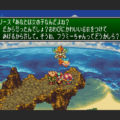SNES Retrospective: Drew’s picks
Hello! Welcome to Damage Control’s SNES retrospective on the 5-day anniversary of the 1-month anniversary of the 30-year anniversary of the Super Nintendo Entertainment System in North America.
While we have traditionally done these as list of our favorite games on a given platform, we’ll be branching out with the posts this week, and doing some SNES-themed editions of some of our regular columns.
Excited? Well, don’t be so today; I ain’t changing a thing. Here’s a list of my favorite games on the platform:
Honorable mentions
A special shout-out to Donkey Kong Country 2, Actraiser and Chrono Trigger which should have made this list, but as I sang their praises just two weeks ago, I’ll open the floor to some other wonderful titles …most of which DID appear on the SNES Classic.
…I also also just wrote about Super Mario World and The Legend of Zelda: A Link to the Past, so they’re also exempt.
Finally, one last shout out to Super Metroid which was left out because it was alphabetically last and I really need to go to bed. So add these six in and you get my Top 10! If you ask nicely, I’ll even rank them.

Earthbound
When you pull in an artist from another medium and give them full creative control over their own game series, you get one of the earliest great examples of video games as an art form. And it accomplishes that task not simply by having a story, but by using every tool in a video games arsenal to not just build a world, but evoke the feeling of being in it.
In addition to those experiences that directly support the plot, Shigesato Itoi packed this game with endless, seemingly extraneous details. While some are as they appear (using a Beatles song to tell a joke about RPG dialog boxes), consider the bicycle.
If you aren’t in the mood for letting design choices inform your experience, you’re going to have a rough time playing.
Early in the game, you can get an almost obnoxiously oversized bicycle. It propels Ness much faster than he can walk, and it’s very useful for avoiding enemies when there’s room to maneuver. But as soon as you meet up with your second character, the bicycle becomes dead weight for just about the rest of the game. Since none of your friends have bikes, you’re stuck hoofing it everywhere when you’re travelling with them. Any normal RPG would have a story event remove the bike right before it became useless, not given you the bike in the first place or just pretend it can hold an infinite number of party members. But Earthbound isn’t simply an RPG. It’s a time machine into the thoughts, feelings and experiences of Itoi’s childhood. Sometimes they’re mindblowingly abstract, and other times they are drop-dead literal.
It’s why Earthbound uses a combat system, overworld menuing and item management that was dated when it came out. It wants to make you feel like you’re in the past with it. It’s why the difficulty is so unbalanced to where you’re constantly hanging on by the brink or just getting whipped out around every turn. You’re a bunch of kids facing an intergalactic threat that is pulling out all the stops to destroy you, even if it’s power is currently so weak all it can do is influence minds and call in mooks.
You can’t approach Earthbound as simply a classic, 16-bit-era console RPG. It’s deliberately crafted to be an experience using the toolset of a 16-bit-era console RPG. That’s why there’s nothing else like it. And its efficacy in achieving this goal is why it is special.

Final Fantasy III [sic]
I had only played a smattering of video game RPGs before this one. On my NES, I had the original Final Fantasy and the port of The Bard’s Tale. On my parents’ Mac, I played as much of the Exile series as the shareware versions would allow. But that was it.
That all changed one day while visiting a friend’s house. It pushed my interest in the genre beyond “Well, I do like fantasy and Dungeon & Dragons.” Final Fantasy III was bigger than that, and it was plan to see almost immediately.
There were larger than life monsters. Every location was a completely different setting. The gameplay was dynamic, colorful and varied. The story sounded and felt grandiose. The music was akin to a tiny orchestra hiding in the SNES. And also getting teen pregnancy past Nintendo’s puritanical censors.
The game blew me away with its first impression similar to how awestruck I was seeing Super Mario World for the first time. But while that was my introduction to to leap to a new generation of technology, seeing this game was my first glimpse of that technology being used to its full potential. And that feeling had a much greater depth to it that really stuck with me.
It wasn’t just the power of that first impression, but rather that that impression bore out through repeated playthroughs that catapults Final Fantasy VI into the top tier of not only my favorite SNES games, but also Final Fantasy games, video games and just games. Because it really helped that it was a VERY good game and not just a tech demo (sorry, Super Castlevania IV. You’re still fun, at least).
When the time came for my local mom-and-pop video rental store to liquidate their SNES games, they offered their copy of Final Fantasy III to me for $10 because I had rented it so many times. And so it was that I laid claim to my first Super Nintendo RPG and Squaresoft game at a time when none (save for bizarrely cheap new copies of Secret of Evermore) could be found.

Secret of Mana
The town where my grandmother lived also had a locally-owned video rental store. The continuing yuppieification of the town moved it from shelves of brown tapes in a old mill building to a modern, swankier location that also sold home theater equipment. And with that move also came game rentals.
I was generally spoiled with a game and a movie rental (among other things) every time I went to my grandparent’s home for a week or so a few times each summer. And while things didn’t always work out for the best (I beat both Mario’s Time Machine and Mario is Missing because of this), I can thank Harbor Audio/Video for introducing me to Rockin’ Cats, Castlevania: Symphony of the Night and, as you may have already guessed, Secret of Mana.
While Secret of Mana didn’t invent the action-RPG genre, it was the gateway to it for a great many people who never played a Falcom game or didn’t count more primitive iterations of the genre like Zelda II or even (*shuddder*) Hydlide.
Secret of Mana played like a mashup of Final Fantasy and Zelda. The RPG mechanics and progression were there clear as day. But you’d also have all your combat in real time right in the overworld. You’d use the weapons and magic you collected to solve environmental puzzles that kept you from going to new areas before finding the right tools. It was a match made in heaven, or so I envisioned Squaresoft to be.
And the fact that it boasted three player simultaneous play was just the icing on the cake. An RPG that you can get your friends involved in? Spectacular!
Any shortcomings that are readily apparent in the game now were easily waived off by the standards of the time. Playing games of “find the event trigger” were starandard fair in the early ’90s. And the fact that, unbeknownst to us at the time, almost half of the game’s story and connective tissue was either left unfinished or cut when the game’s format changed from CD-ROM to a cartridge, came off as simply being an average translation. But since those cuts were made to preserve the quality of the CD-intended soundtrack, I wholeheartedly support the tradeoff.

Soulblazer
Okay, I have one that WASN’T on the SNES mini.
With Actraiser considered as written, why not give another Quintet game in the samne setting?
Soulblazer shows its age a bit these days, but remains a solid action/adventure game using the Zelda angle with MUCH better hitboxes than Nutopia. The hook to it is that the world’s lifeforms have been sealed away by the big bad in dungeons below. By venturing forth, you slowly but surely release the seals of people, animals, even trees and repopulate the towns of the world. Once freed, each of them will be able to help you on your quest by plying their trade, moving the story forward, finding an item or opening the way to new areas of the towns or dungeons.
In short, it was Dark Cloud about 8 years ahead of schedule and it played a lot better, too.
The stilted, early-’90s translation job hinders the heart of the story a bit, but you can still see it for what it is.






Not enough people talk about Soul Blazer. This is awesome, and you are awesome.